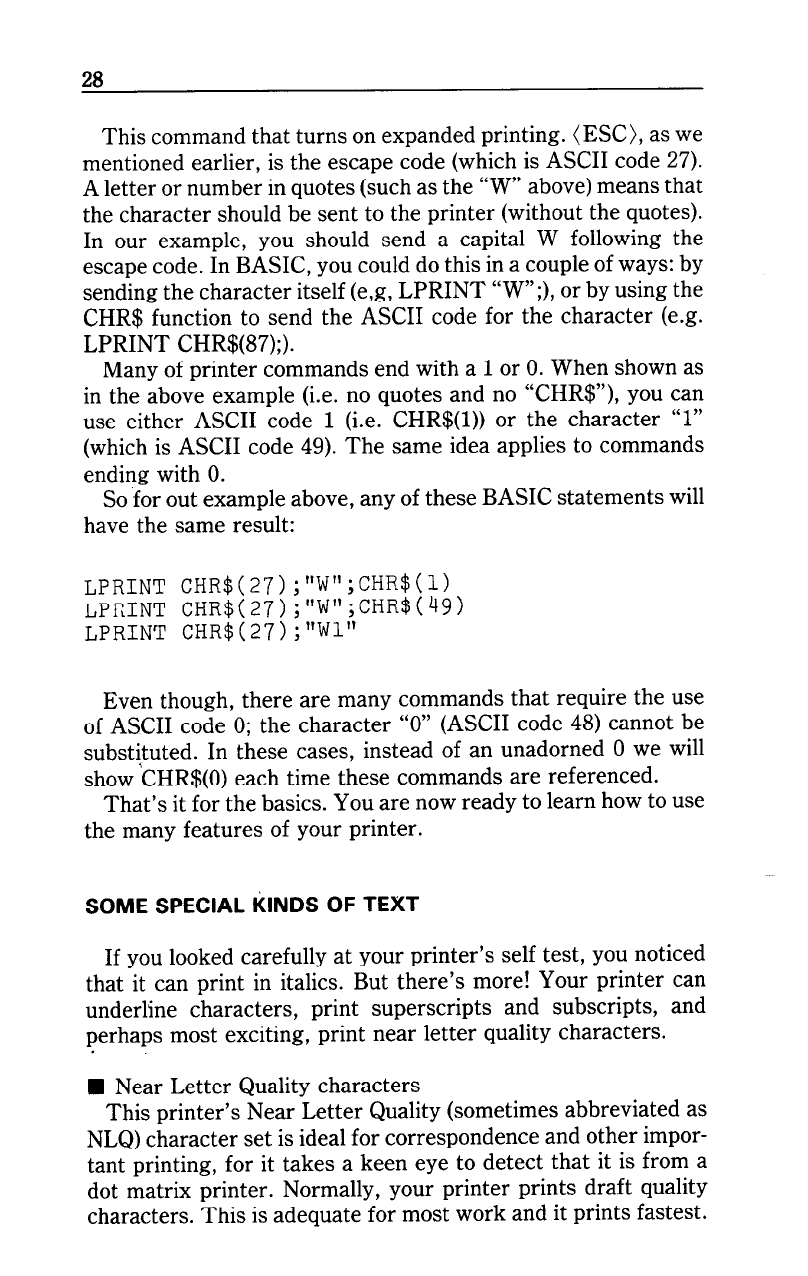
28
This command that turns on expanded printing. (ESC), as we
mentioned earlier, is the escape code (which is ASCII code 27).
A letter or number in quotes (such as the “W” above) means that
the character should be sent to the printer (without the quotes).
In our example, you should send a capital W following the
escape code. In BASIC, you could do this in a couple of ways: by
sending the character itself (e,g, LPRINT “W”;), or by using the
CHR$ function to send the ASCII code for the character (e.g.
LPRINT CHR$(87);).
Many of printer commands end with a 1 or 0. When shown as
in the above example (i.e. no quotes and no “CHR$“), you can
use either ASCII code 1 (i.e. CHR$(l)) or the character “1”
(which is ASCII code 49). The same idea applies to commands
ending with 0.
So for out example above, any of these BASIC statements will
have the same result:
LPRINT CHR$(27>;"W";CHR$(l>
LPl-lINT CHR$(27);"W';CHR$(49)
LPRINT CHR$(27);"Wl"
Even though, there are many commands that require the use
of ASCII code 0; the character “0” (ASCII code 48) cannot be
substituted. In these cases, instead of an unadorned 0 we will
show ‘CHR$(O) each time these commands are referenced.
That’s it for the basics. You are now ready to learn how to use
the many features of your printer.
SOME SPECIAL HINDS OF TEXT
If you looked carefully at your printer’s self test, you noticed
that it can print in italics. But there’s more! Your printer can
underline characters, print superscripts and subscripts, and
perhaps most exciting, print near letter quality characters.
n Near Letter Quality characters
This printer’s Near Letter Quality (sometimes abbreviated as
NLQ) character set is ideal for correspondence and other impor-
tant printing, for it takes a keen eye to detect that it is from a
dot matrix printer. Normally, your printer prints draft quality
characters. This is adequate for most work and it prints fastest.


















